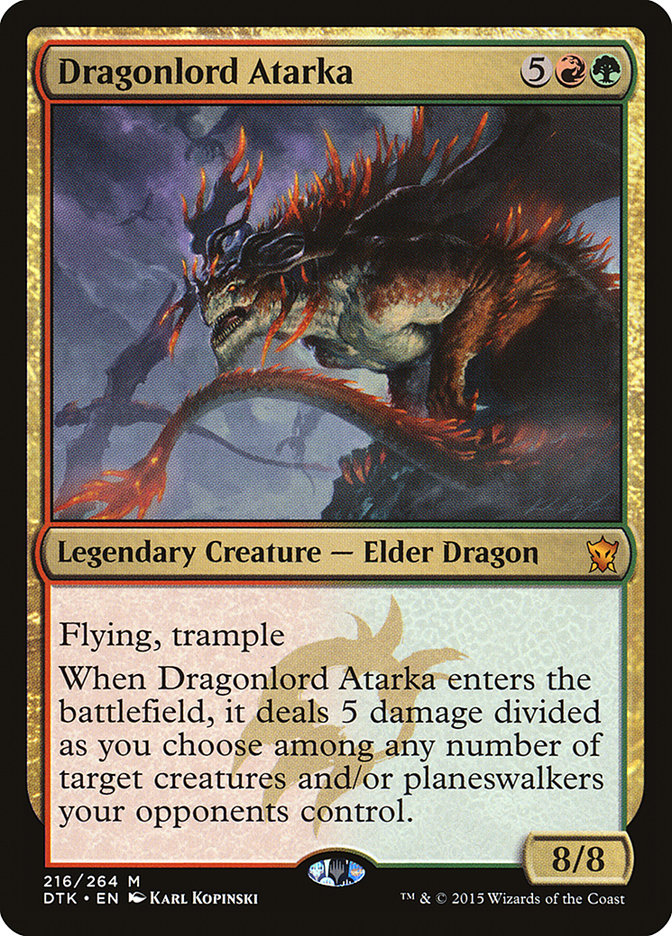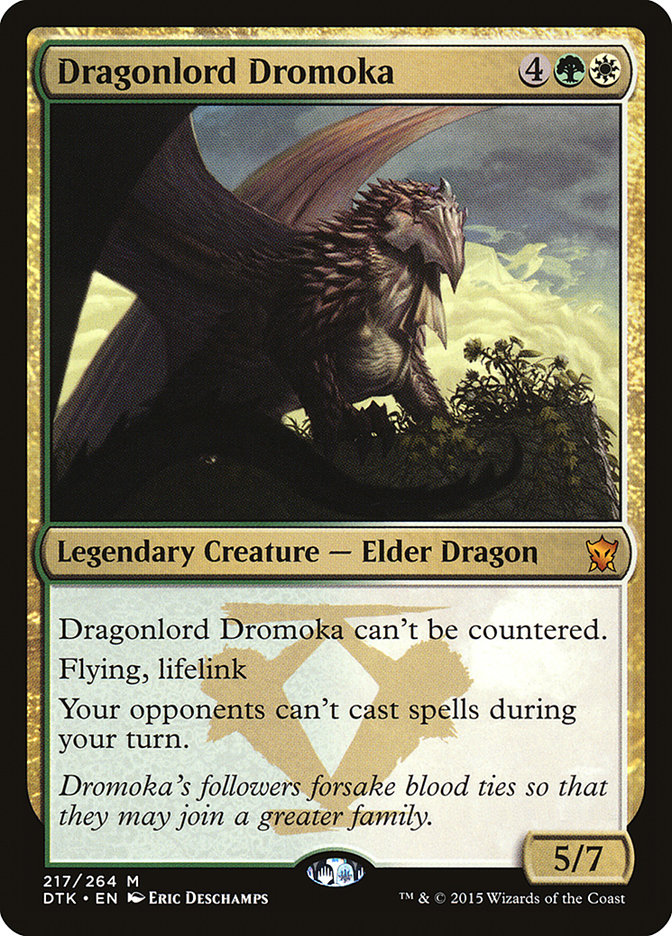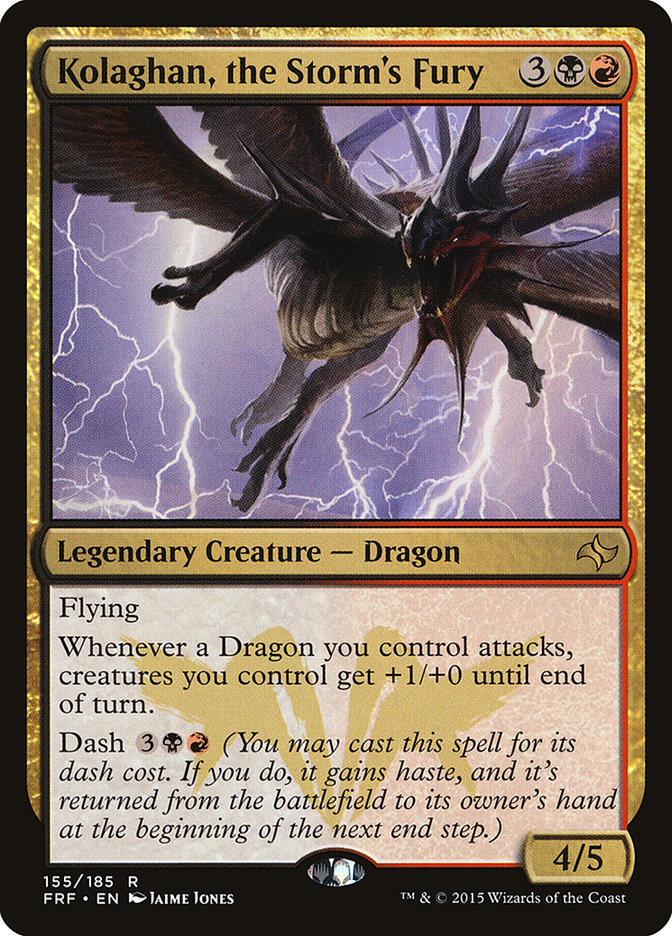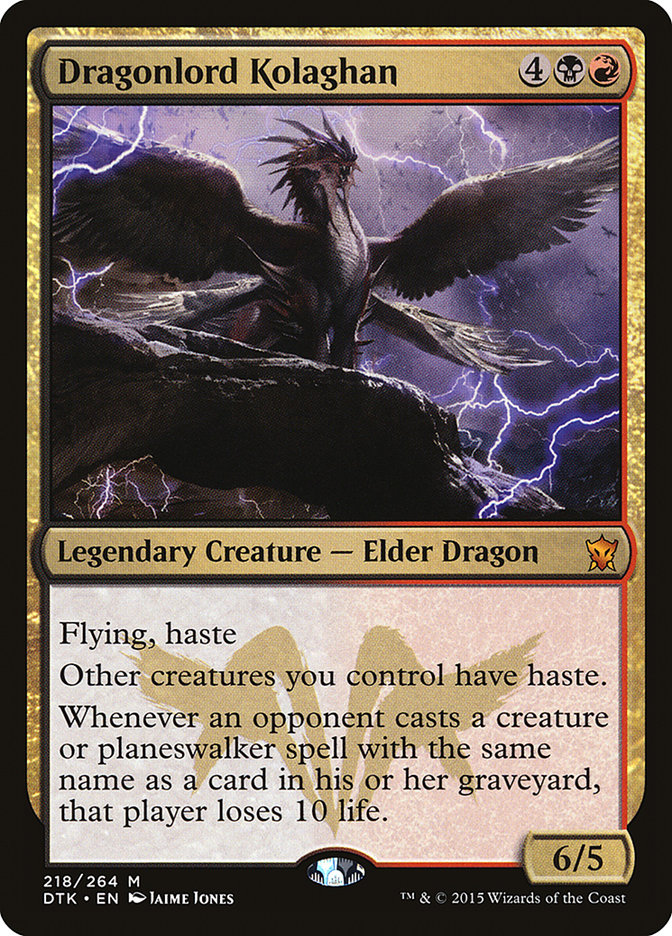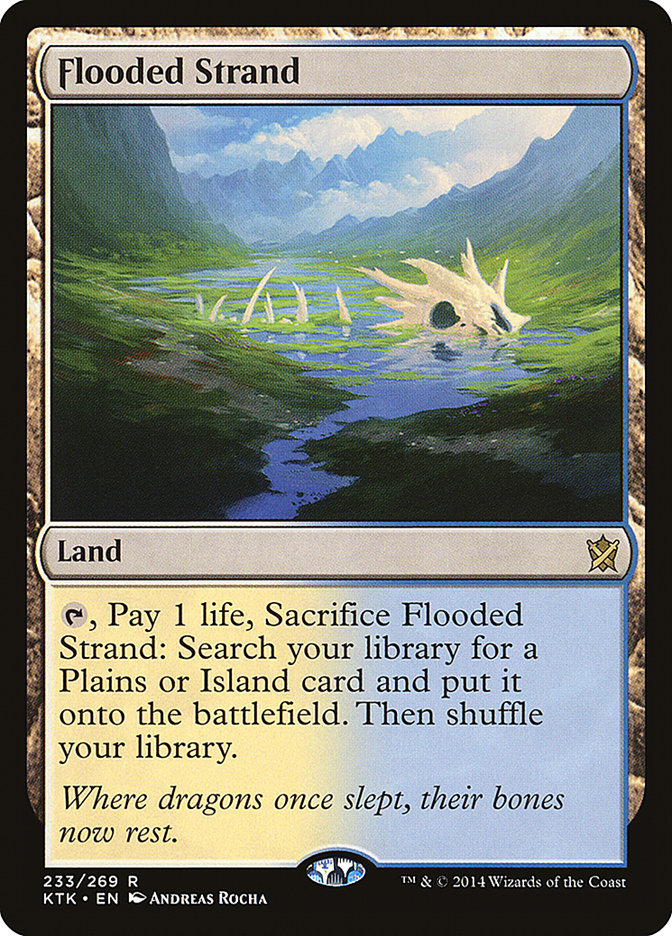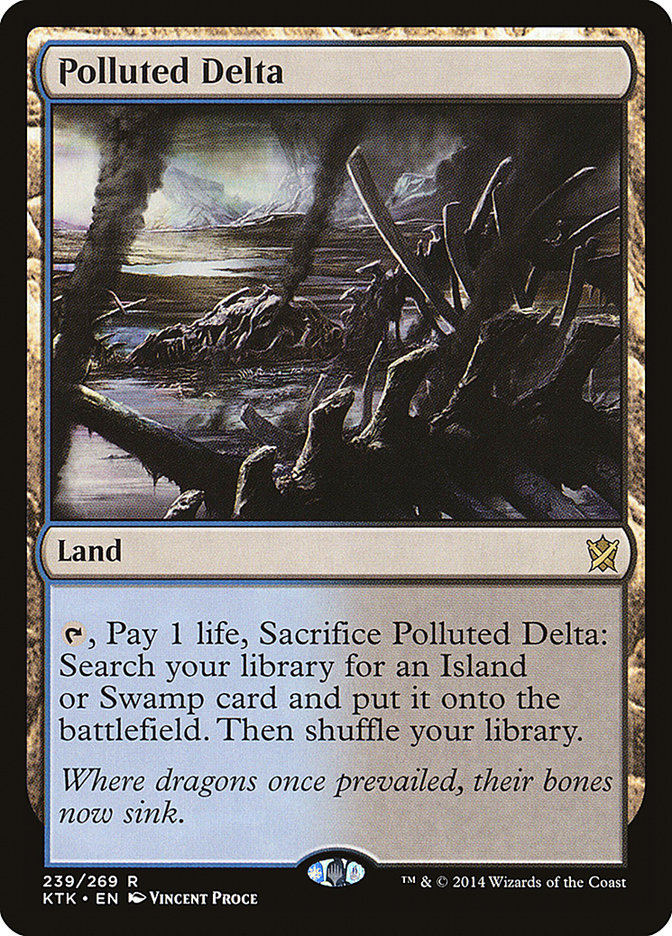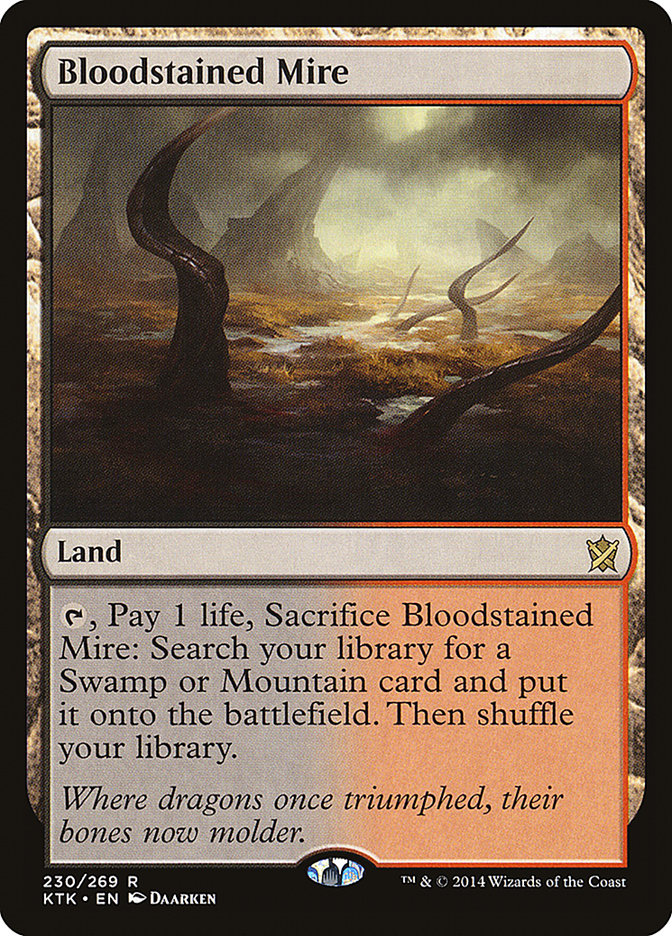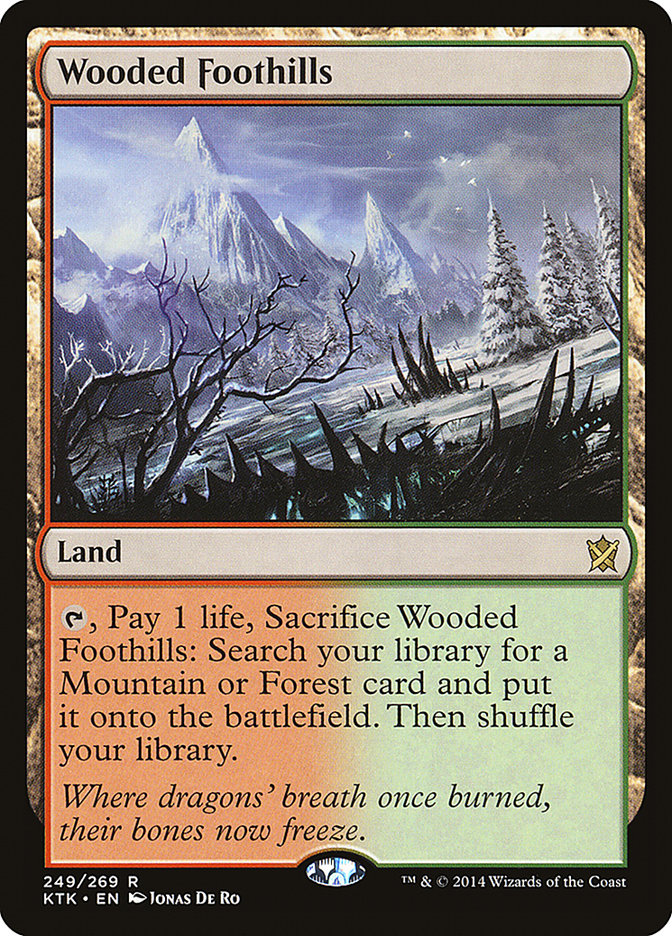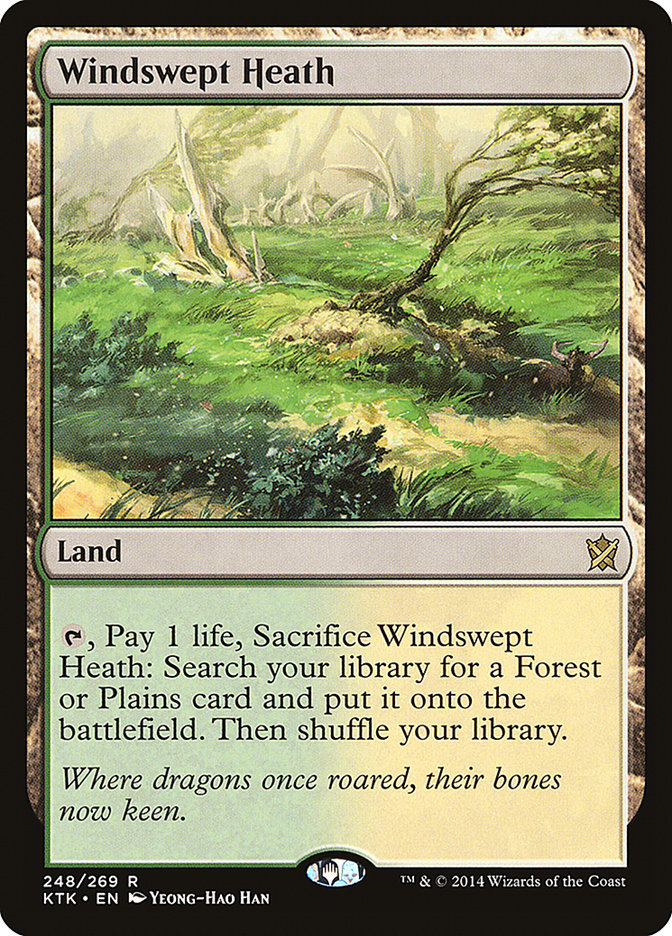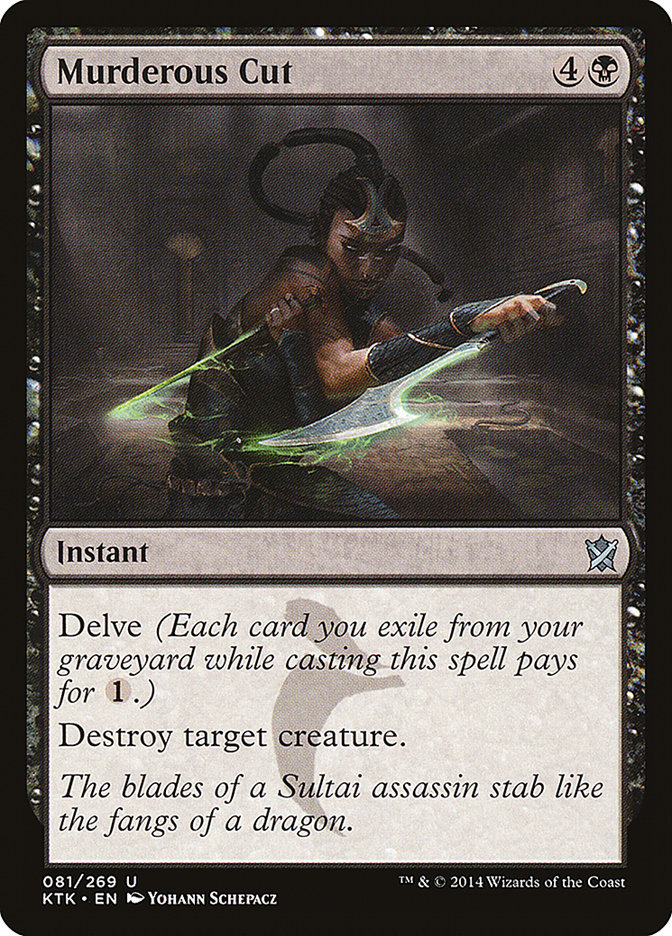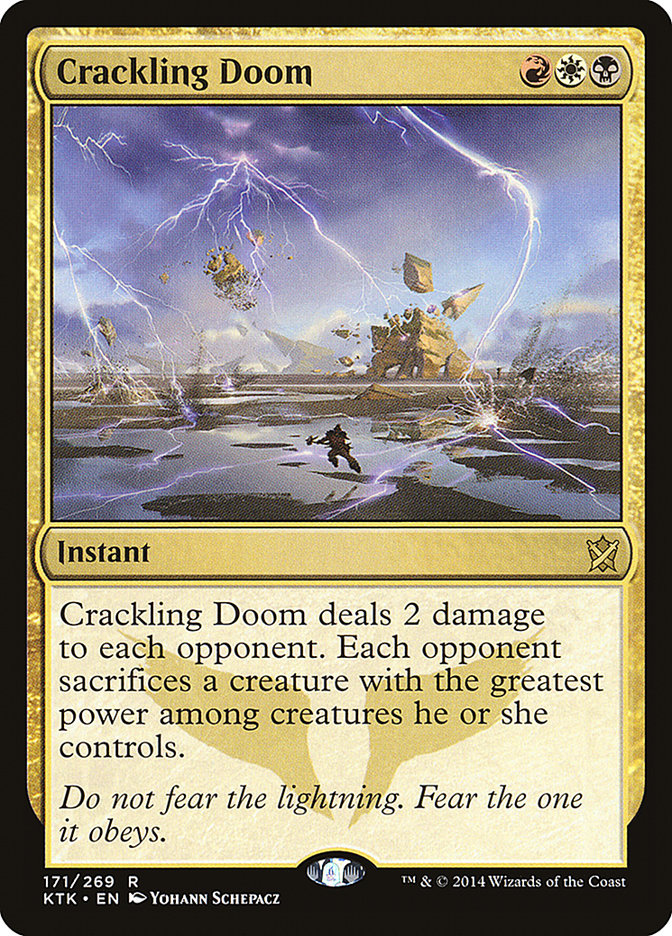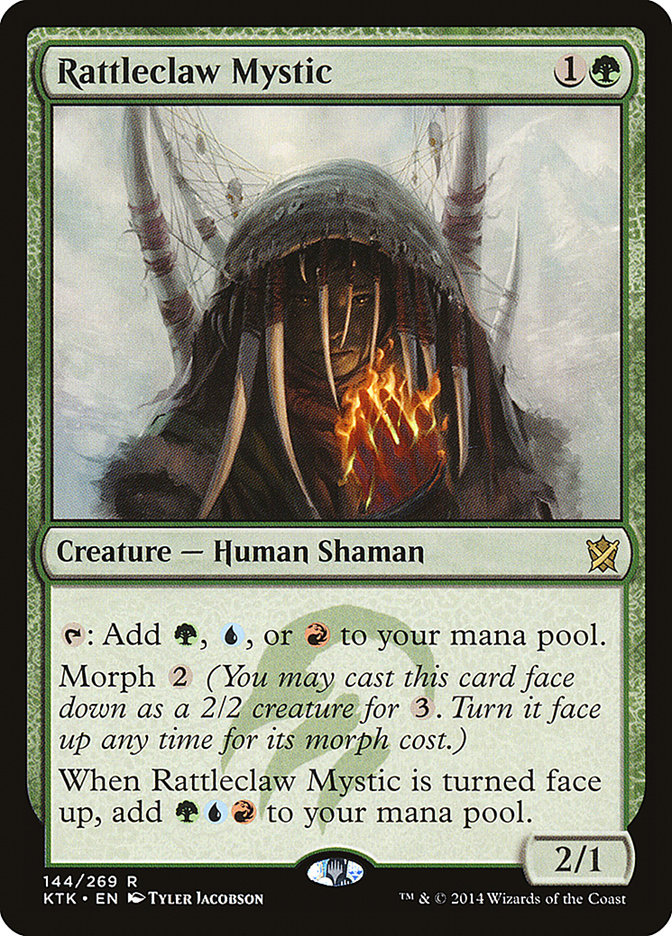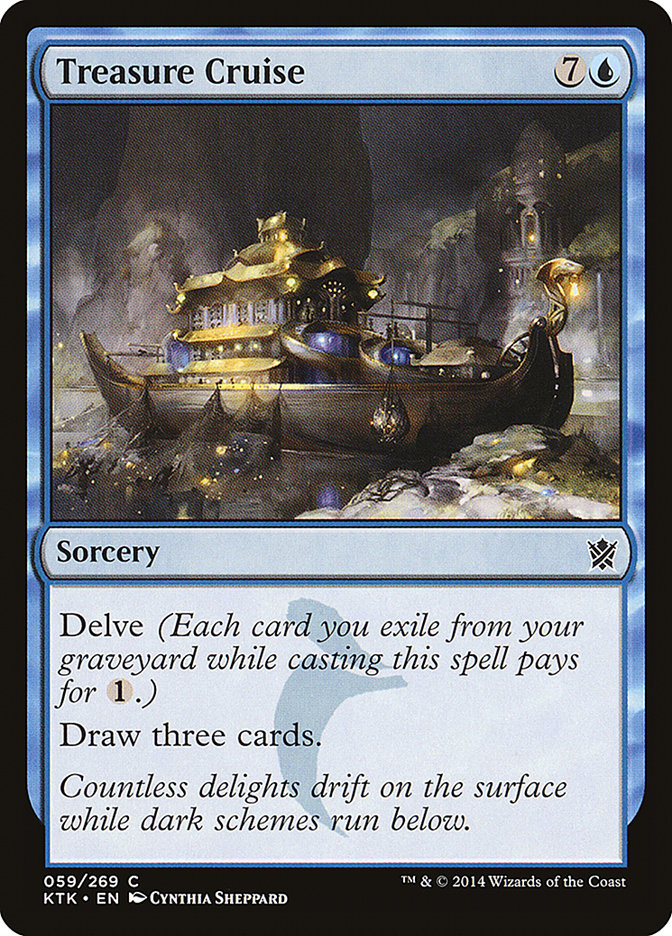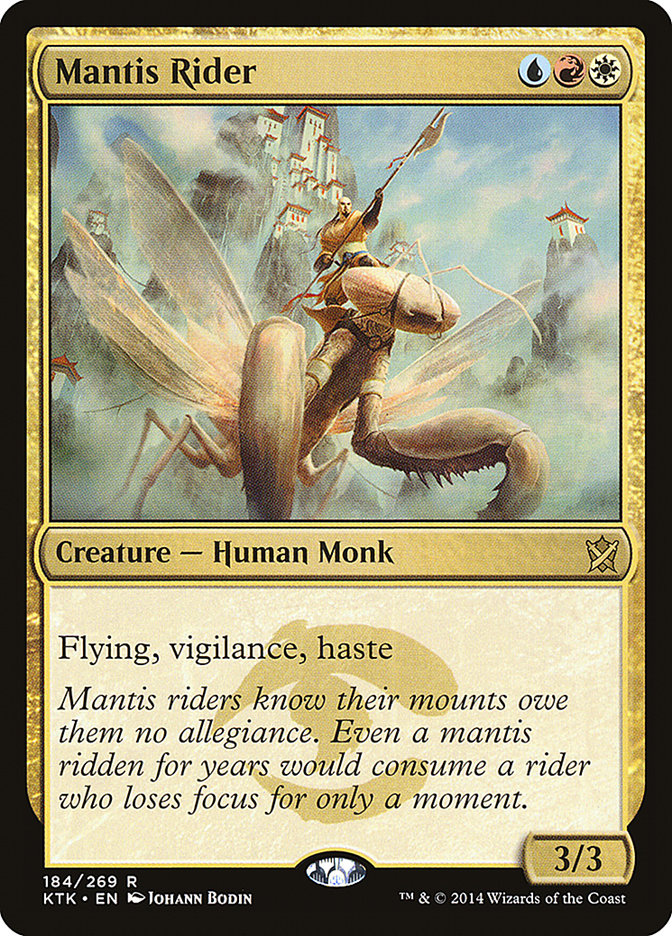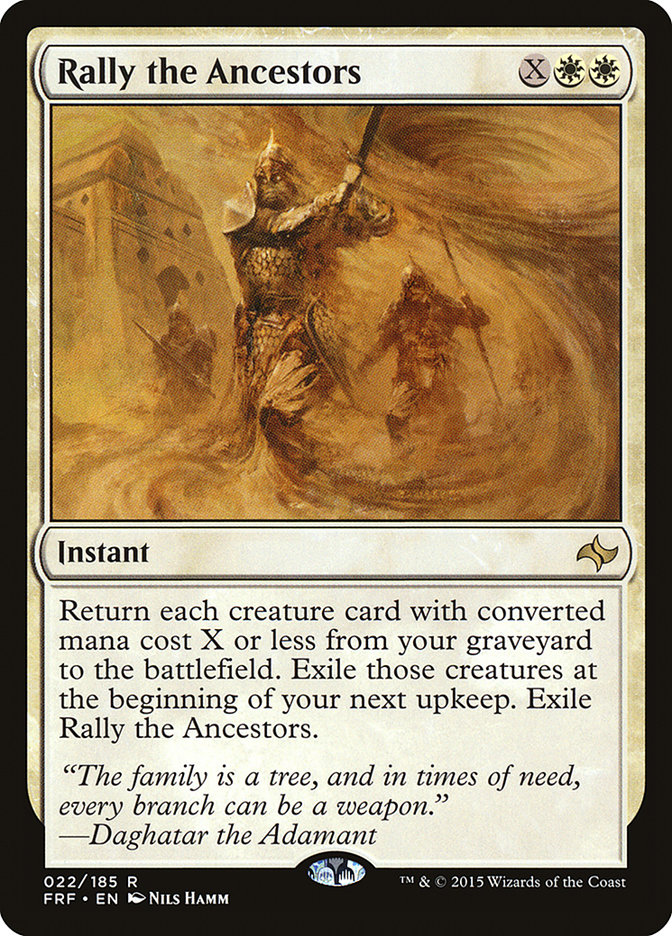We get to keep Dragons? Now that’s a policy I can get behind.
While I appreciate this implication of the policy, it does make it a bit more confusing than usual to figure out exactly what is leaving the format. Normally you can just lump all of the cards in a block together when you’re thinking about their Standard legality, but in this case, it’s important to know whether a card came from Fate Reforged or Dragons of Tarkir. You can’t even just assume that all the sweet dragons are sticking around, since the better Kolaghan is sadly the one from Fate Reforged. Alas.
But let’s get on with it, shall we? And let’s start right at the top.
Fetchlands started off as a nice boon to allied-color combinations and decks playing with Delve cards when they debuted in Standard, but they absolutely defined the format upon the release of the Battle land cycle in Battle for Zendikar. While three-color decks built around the clan color combinations were the norm before, the consensus best deck in the current Standard format plays four colors with ease, including a double colored splash for Rally the Ancestors.
The loss of fetchlands is going to force players to completely revisit what it means to make a manabase. The Battle lands will go from being central features of virtually every deck to being played much more sparingly, as they’ll only function optimally in decks that actually have a high density of basic lands. Without taking into account what Shadows over Innistrad has to offer in terms of mana fixing, I suspect that we’ll see a return to two-color decks as the norm, perhaps splashing for a third color, but certainly nothing near what we have come to expect in Standard right now. We may still see some Painful Truths out there, but they won’t be the near-freerolls in many decks as they are right now.
Interestingly, with the fetchlands gone and depending on what kind of lands we see in the new block, there may be a period of time when enemy-colored decks have access to the best mana, thanks to the creature-lands in Oath of the Gatewatch and the painlands from Magic Origins. I have experimented with a number of G/B midrange-style decks with the last few sets, but they always felt outclassed by decks that were stretching their mana a bit more. With so much of the mana fixing and so many of the powerful gold cards leaving, perhaps it’s finally their time.
Speaking of powerful gold cards, there isn’t another that made its mark during its time in Standard quite like Siege Rhino. Abzan took home the title at two Pro Tours and a World Championship during that stretch, and Rhino made its presence known in Modern as well. Not a bad showing, by any standard.
But it’s not just Siege Rhino that’s leaving. It’s also Anafenza, the Foremost; Abzan Charm; Warden of the First Tree; and Wingmate Roc – pretty much all of the cards that made the various forms of Abzan possible. Of all of the clans of Tarkir, Abzan was the one that seemed to have all of the best toys that worked so well together.
With essentially all of the cards that made up Abzan leaving Standard, we can hope to see more variety in midrange strategies. Siege Rhino and friends so dramatically outclassed most of the other options that it was rare to see any kind of non-Abzan midrange deck during their time in Standard. If only Savage Knuckleblade could have been in a different set…
While Siege Rhino got most of the glory, one of the cards that quietly made Abzan so strong was Abzan Charm. All three modes were very powerful, from a clean answer to nearly every relevant creature to a powerful combat trick and even card draw in a pinch. Other midrange decks typically have to play more dedicated removal, which can easily get stranded in their hands against creatureless or creature-light control decks. The departure of Abzan Charm may serve as an opportunity for such strategies to take advantage of that kind of virtual card advantage more effectively in the future.
And I’d say that the departure of Anafenza might leave the door open for graveyard strategies in the new block, but who are we kidding? Even with Anafenza, graveyard decks are doing just fine right now…
Murderous Cut is the single card that’s rotating out that I’m happiest to see go, followed closely by Crackling Doom. Creatures have had a rough go of it in Standard for a while now, and these two are the biggest long-term offenders. I tried so many times to build decks around sweet cards like Woodland Wayfarer or Surrak, the Hunt Caller, but paying four mana for a creature whose power rests in its actual body rather than an enters-the-battlefield trigger has been a losing proposition for a long time.
I don’t have a problem with good removal spells, generally speaking, but it’s troublesome when the best removal spells are so easy to play. Murderous Cut is incredibly efficient, and with fetchlands both fueling the delve cost and finding the lone black mana needed to cast it, Murderous Cut can easily find its way into almost any deck. I remember looking at the top Standard decklists from the Standard Open and Invitational in Las Vegas late last year and realizing that Murderous Cut was something like fifteen of the sixteen Top 8 lists between them. That’s hardly a friendly world for creatures.
Crackling Doom existing at the same time as Murderous Cut was just salt in the wound. Even if you invested in something like a powerful hexproof creature to try to beat removal-heavy decks, it would just incidentally die to Crackling Doom. It wouldn’t have been a problem if Crackling Doom were limited to seeing play in just a small fraction of decks, like a three-colored spell reasonably should, but with mana flowing so easily, it found its way into everything from Jeskai Black to Mardu Green.
And it certainly didn’t help that so many of these Murderous Cut and Crackling Doom decks could just flash them back with Jace, either.
With Cut and Doom gone, there might be a window for a resurgence of midrange creatures, much as cards like Thundermaw Hellkite and Falkenrath Aristocrat surged in popularity with the departure of Dismember and Vapor Snag. Of course, there wasn’t a Reflector Mage waiting in the wings back then to shut them down, so maybe that’s just me hoping for a future that will never come.
One card that suffered from the existence of Crackling Doom in particular that will still be around after the rotation is Sarhkan Unbroken. I think even with Doom around Sarhkan was among the most underrated and underplayed cards in the format, but without the risk of getting totally blown out if you make a dragon, he’s certainly much better positioned, assuming the mana fixing and acceleration is good enough to support him.
Speaking of which…
Okay, here’s a card that I’m actually sad to see go, which probably comes as a shock to no one. Rattleclaw Mystic has been the best mana accelerator in Standard since Elvish Mystic and Sylvan Caryatid left, and given that Wizards has seemingly decided that one-mana ramp creatures are too good, it’s likely the best we’re going to see for a while.
With Rattleclaw Mystic gone, so with it goes not just the best creature mana acceleration, but also mana fixing. The loss of the fetchlands already put a damper on multicolor strategies, and this is yet another hit. I suspect we’ll likely see some kind of green mana fixing and acceleration in Shadows over Innistrad, since that’s very much a core feature of the color’s identity, but I doubt it will be as strong as Rattleclaw Mystic.
Rattleclaw Mystic was unique in its ability to offer not just Standard mana ram, but also the potential for a single burst of mana with its morph ability. This was a big deal in the G/R Devotion decks in the last Standard format and also came in handy for Eldrazi Ramp decks recently – and for the handful of people who actually also played my Temur Dragons deck in the wake of GP Oakland. The loss of Rattleclaw will reduce the potential top-end these decks can easily reach, which is sad news for anyone looking to play Dragonlord Atarka before she too leaves Standard.
I’m hopeful that we’ll get a good new green mana creature in Shadows over Innistrad, and that it will be revealed soon, so I don’t have to live much longer with this empty feeling in my soul that only a descendent of Llanowar Elves can fill.
While they were eventually supplanted by Painful Truths as the most popular card draw effects in Standard, Dig and Cruise had a huge impact on the format. The power of these effects, especially alongside Jace, made it very difficult for other decks based on attrition strategies to succeed.
I tried several approaches to Jund and Temur Black-style midrange decks built around synergies between Den Protector, Deathmist Raptor, and Kolaghan’s Command, but found that even with all of that card advantage it was hard to keep up with the power of the delve card draw effects paired with all of the most efficient spells. Painful Truths isn’t going anywhere just yet, but with the mana in the format making it tougher to play alongside all of the best spells, we’ll hopefully see a move away from raw efficiency plus card draw as the default most effective approach.
While Seeker of the Way and Soulfire Grand Master each had their times in the spotlight, Mantis Rider was the defining Jeskai creature for most of the clan’s life cycle. The speed at which the flying haste creature could close out games, especially in multiples, absolutely shaped both the quantity and nature of the removal that decks played in the format.
In that way, it reminded me somewhat of Olivia Voldaren from the last time we went to Innistrad. Even decks that otherwise wouldn’t bother playing much if any removal felt compelled to include ways to remove Mantis Rider, because if it went unchecked for even just a few turns, it could easily mean the game was over.
With Mantis Rider gone, three damage is no longer the same key flashpoint for removal, which could make the stock of two-damage removal spells like Kolaghan’s Command go up. Similarly, the ability to deal with fliers may no longer be as crucial as it was, which could help empower defensive ground-oriented cards like Deathmist Raptor.
Last, but certainly not least, Four-Color Rally has really been the single most defining deck in Standard since the release of Battle for Zendikar gave it the manabase it needed. Four-Color Rally won the last Grand Prix before the release of Oath of the Gatewatch in the hands of Reid Duke, and Owen Turtenwald just took down the most recent Standard Grand Prix playing an even more powerful version of the deck thanks to Reflector Mage.
There’s not much to say about this card, in my mind, except good riddance. I thought the value Rally decks that first cropped up with cards like Liliana, Heretical Healer; Elvish Visionary; and Fleshbag Marauder were kind of cute at first, but after Jace got involved and the deck’s consistency and power level went through the roof, it stopped being cute and just became frustrating. I think the Four-Color Rally decks goes to show the dangers of both having mana that is too good and having powerful graveyard effects without a good safety valve in the format.
It’s sad, because I love the cute and fair graveyard cards like Ghoultree and Splinterfright that we saw last time we were in Innistrad, but thanks to Unburial Rites and Snapcaster Mage, there were always cards like Nihil Spellbomb and Rest in Peace around to stop them. But Rally’s dominance is what happens when you don’t have graveyard hate of that caliber in the mix when you need it, so I’m willing to accept that means I won’t get to have the fair graveyard fun I’m looking for
What do you think? What are the most important cards to leave with Khans of Tarkir and Fate Reforged, and what does that mean for the format moving forward? What are the big winners of the rotation?


